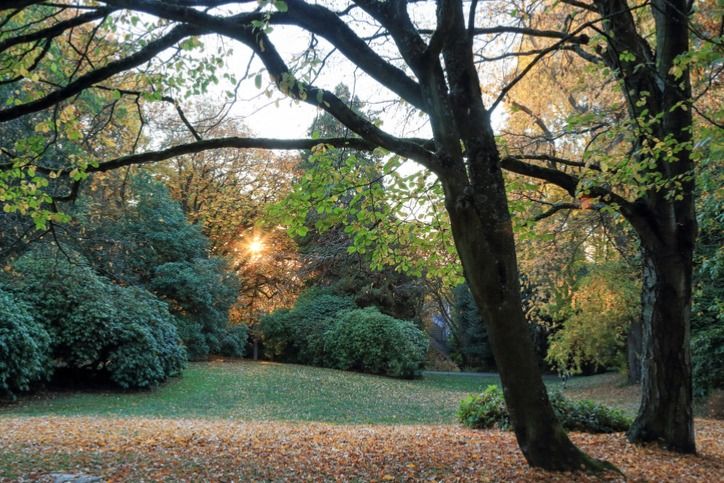TREE EDUCATION

Winters for Sunshine State residents are rather laid-back. In sunny Florida, there is never any fear of snowed-in roads or driveways. However, this does not mean that tree owners are relieved of their tree care duties. Tropical, subtropical, citrus, and palm trees are all still susceptible to frost damage during this time.
Any temperatures below 32 degrees Fahrenheit can freeze off buds, fruit, leaves, or twigs. Due to this, it is important for Florida homeowners to keep a close eye on weather reports and frost advisories during the winter season. For additional assistance, our team of arborists are available to help you create a personalized tree protection plan for your property. Call, email, or message SkyFrog Tree Service today to schedule professional tree care services in Florida!
Burlap coverings, sheets, and tarps are an affordable way to protect your beloved trees. Carefully wrap young trees and less hardy varieties with these materials to trap heat. In some cases, farms with frost-sensitive fruit trees use multiple layers. First, an umbrella-shaped cover made of fabric is placed over the tree's canopy. This initial covering is held in place with posts, twine, rope, or clamps. Remember: when shielding your tree, be careful not to let the fabric touch your tree's delicate blossoms, leaves, or branches. This can cause unintentional damage.
Over the fabric layer, a plastic tarp should be placed. This second layer provides further protection and insulation. For additional protection, buckets of water can also be placed under the tarp. This water will release heat during cold nights, keeping the tree alive.
Tree pruning and trimming is not recommended during the early winter season. Depending on the tree variety, early pruning can remove flower buds, which means less blooms in the spring. Additionally, cold stress can make it difficult for trees to properly heal after pruning. Unfortunately, this can lead to infections and diseases in the tree's affected branches.
Generally, late winter and early spring is the recommended time for pruning. Pruning dead branches during this time can encourage new, lusher growth.
At SkyFrog Tree Service, our certified arborists can assist with tree management for residential homes and commercial businesses. Our team can determine the best time to trim back dieback to encourage healthy growth.
Wooden mulch offers many natural benefits. From warding off pests to deterring the growth of weeds, mulch is incredibly useful. Before a freeze warning, scatter mulch along the base of trees. The mulch will serve as a layer of insulation between the soil and the air. By trapping heat and moisture, mulch can even prevent frost heave. This process occurs when soil freezes, thaws, and then refreezes. This constant temperature change can cause the soil to shift, pushing the tree's roots out from underground. Here, the tree's roots are exposed to the elements, putting them at great risk.
New ornamental trees that you recently purchased from a nursery may still be sitting in the pots they arrived in. If this is the case, resist the urge to plant them into the ground. Instead, bring the pot into a climate-controlled shed, patio, or garage until the frost or freeze advisory is over. In the event that the tree won't fit indoors, move the pots until they are close to the exterior walls of your household. Reflective heat radiating from your home can keep the trees slightly warmer than they would have been otherwise.
While it may seem counterintuitive, watering your trees can protect them from frost damage. This is because moist soil is better at absorbing and retaining the sun's heat than dry soil. If possible, try to water your trees when temperatures are the coldest.